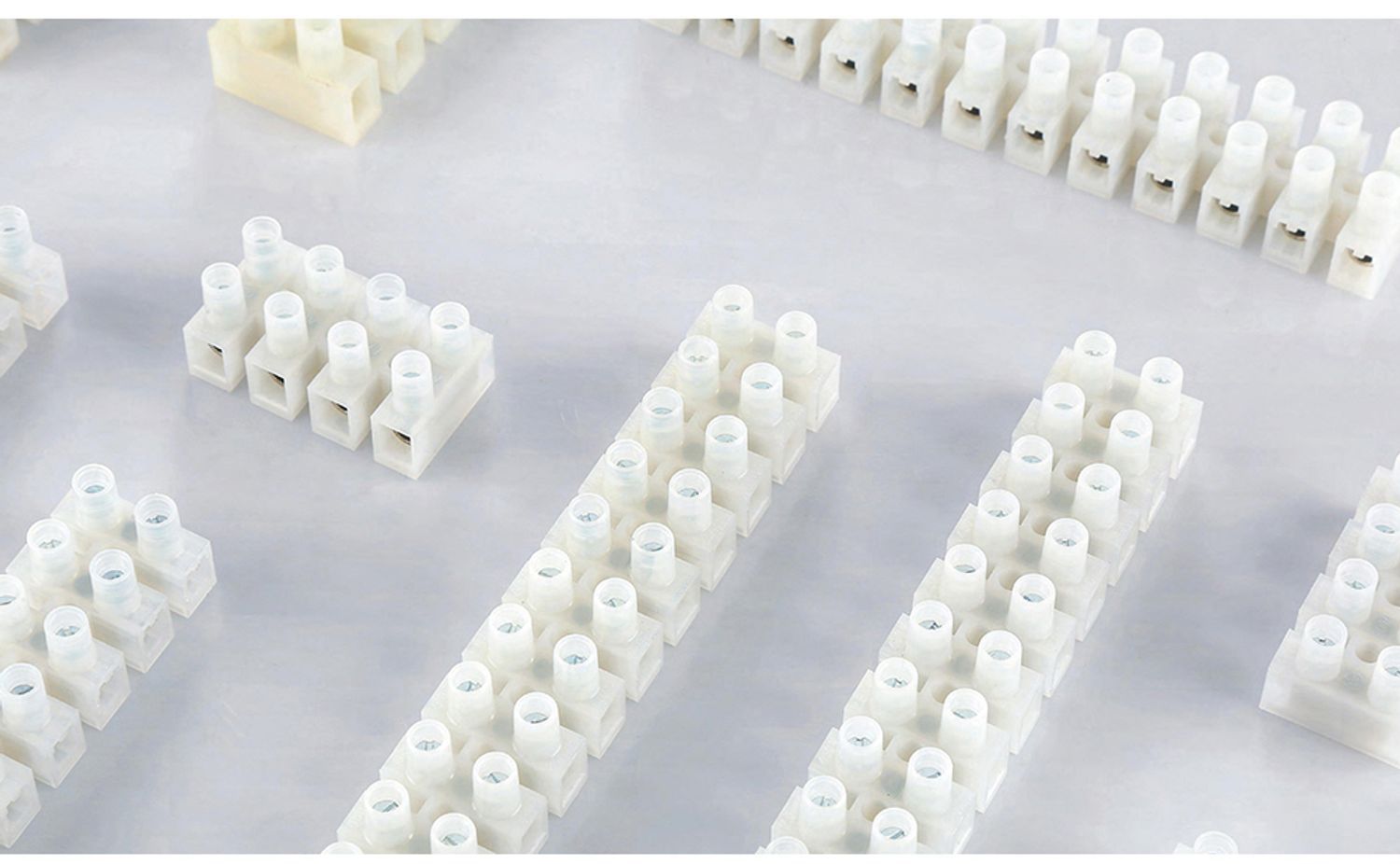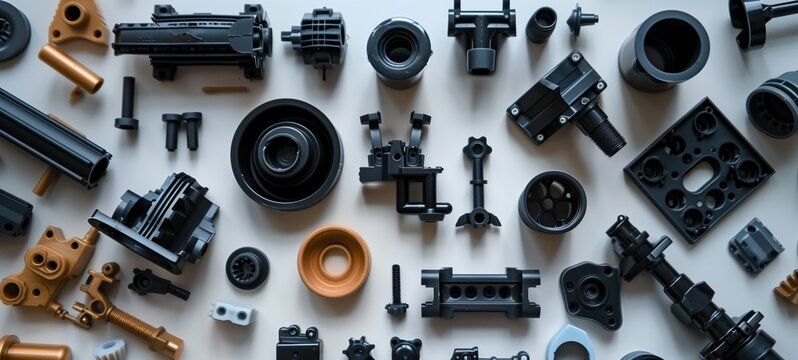Unlock your product's potential with our One-stop solutions!
+86-755-83222882

GET QUOTE
What is POM in Injection Molding?
In the world of injection molding, material selection is critical to achieving the desired properties and performance of the final product. One of the most commonly used materials in this process is POM (Polyoxymethylene), a high-performance engineering plastic known for its excellent mechanical properties and ease of processing. In this blog, we will explore what POM plastic injection molding entails, its advantages, and why it is widely used in various industries.
Understanding POM in Injection Molding
What is POM?
POM (Polyoxymethylene), also known as acetal or Delrin (a brand name), is a thermoplastic polymer that is widely used in precision parts requiring high stiffness, low friction, and excellent dimensional stability. It is known for its high strength and rigidity, making it an ideal material for injection molding.
POM is available in two forms: homopolymer and copolymer. The homopolymer variant offers slightly higher mechanical strength and hardness, while the copolymer provides better chemical resistance and dimensional stability. Both forms are extensively used in POM plastic injection molding to create components for automotive, consumer goods, and industrial applications.
Why Use POM in Injection Molding?
POM is highly favored in injection molding due to its unique combination of mechanical properties and ease of processing. It offers high wear resistance, low friction, and excellent chemical resistance, making it suitable for parts that must withstand demanding conditions. Additionally, POM's low moisture absorption ensures that parts maintain their dimensional stability even in humid environments.
In POM plastic injection molding, the material's ability to flow easily during the molding process allows for the production of complex and precise parts with tight tolerances. This makes POM an excellent choice for manufacturing gears, bearings, and other mechanical components that require high precision.
Advantages of POM in Injection Molding
Superior Mechanical Properties
One of the key reasons POM is widely used in injection molding is its superior mechanical properties. POM exhibits high tensile strength, stiffness, and impact resistance, making it ideal for parts subjected to mechanical stress. Its high fatigue resistance ensures that parts made from POM can endure repeated loading and unloading cycles without failing.
These properties make POM plastic injection molding a preferred choice for producing parts like gears, bushings, and fasteners that must maintain their structural integrity over time.
Low Friction and Wear Resistance
POM is known for its low coefficient of friction, which results in minimal wear when parts slide against each other. This property is particularly valuable in applications where reducing friction and wear is essential, such as in automotive components and conveyor systems.
In POM plastic injection molding, the material's low friction and wear resistance allow for the production of parts that require smooth operation and long service life, such as bearings, rollers, and sliding mechanisms.
Chemical and Thermal Resistance
Another advantage of POM in injection molding is its excellent resistance to chemicals, fuels, and solvents. POM can withstand exposure to a wide range of chemicals without degrading, making it suitable for use in harsh environments.
Additionally, POM has good thermal stability, allowing it to retain its mechanical properties at elevated temperatures. This makes it an ideal material for parts that are exposed to heat, such as automotive components and industrial machinery.
Dimensional Stability and Low Moisture Absorption
POM's low moisture absorption ensures that parts maintain their dimensional stability even in humid environments. This is particularly important in applications where precision is critical, such as in the manufacture of tight-tolerance parts.
In POM plastic injection molding, the material's dimensional stability ensures that parts remain consistent in size and shape, reducing the need for post-processing and improving overall production efficiency.
Applications of POM in Injection Molding
Automotive Industry
The automotive industry is one of the largest users of POM plastic injection molding. POM's combination of strength, low friction, and wear resistance makes it ideal for producing components like gears, bushings, fuel system parts, and door locks. POM's resistance to fuels and chemicals also makes it suitable for under-the-hood applications, where exposure to harsh conditions is common.
Consumer Goods
POM is widely used in the production of consumer goods, including kitchen appliances, electrical components, and fasteners. Its high stiffness and dimensional stability make it an ideal material for producing parts that require precision and durability.
In the electronics industry, POM plastic injection molding is used to create connectors, switches, and housings, where electrical insulation and mechanical strength are crucial.
Industrial Applications
POM is extensively used in industrial applications where high wear resistance and low friction are essential. Components like bearings, rollers, and conveyor belts are often made using POM plastic injection molding to ensure smooth operation and long service life.
POM's chemical resistance also makes it suitable for use in industrial machinery and equipment that are exposed to corrosive substances.
Medical Devices
In the medical industry, POM plastic injection molding is used to produce precision parts for devices like insulin pens, inhalers, and surgical instruments. POM's biocompatibility, coupled with its mechanical properties, makes it a suitable material for applications where precision and safety are paramount.
Comparing POM to Other Plastics in Injection Molding
POM vs. Nylon
Both POM and nylon are popular choices for injection molding due to their excellent mechanical properties. However, POM has a lower coefficient of friction and better wear resistance compared to nylon, making it more suitable for applications requiring smooth operation and low wear. On the other hand, nylon offers better impact resistance and is more resistant to UV radiation, making it a better choice for outdoor applications.
POM vs. ABS
ABS is another commonly used plastic in injection molding, known for its toughness and impact resistance. However, POM offers better wear resistance and lower friction than ABS, making it more suitable for mechanical components like gears and bearings. ABS, on the other hand, is easier to process and offers better surface finish, making it ideal for consumer products and electronics housings.
POM vs. Polypropylene
Polypropylene is a versatile plastic with excellent chemical resistance and flexibility, often used in packaging and automotive components. While polypropylene is cheaper and more resistant to fatigue, POM offers superior mechanical properties, including higher strength and stiffness, making it more suitable for precision parts requiring high performance.
Conclusion
POM (Polyoxymethylene) is a highly versatile and valuable material in the world of injection molding. Its combination of superior mechanical properties, low friction, wear resistance, and chemical stability makes it an ideal choice for a wide range of applications across various industries. Whether you’re producing automotive components, consumer goods, or industrial machinery parts, POM plastic injection molding offers the precision, durability, and performance required to meet the demands of modern manufacturing.
At SZOMK, we specialize in POM plastic injection molding, providing high-quality, precision-engineered parts tailored to your specific needs. With our expertise and state-of-the-art facilities, we can help you achieve the best results for your project. Contact us today to learn more about how SZOMK can support your next injection molding venture.


